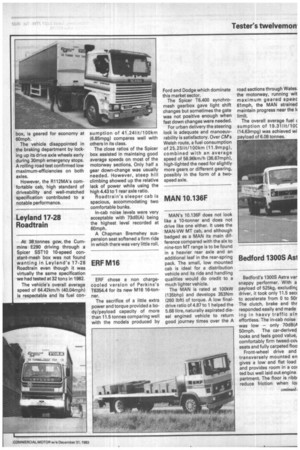Scania R112
Page 30

Page 35

If you've noticed an error in this article please click here to report it so we can fix it.
Scania bided its time before entering the "intercooled" club with its 11and 14-litre engines. The wait was worth while for the smaller of these, installed in an R112MARC tractive unit, produced an admirable performance at 38 tonnes.
With an output of 245kW (333bhp) the test vehicle completed the Scottish route effortlessly at an average speed more in keeping with a 32-tanner. Its fuel consumption, which might have suffered as a result of the fast journey times, was only marginally below 7.0mpg, which complemented a good, all round performance.
The engine has a taller radiator and air to air charge-cooler heat exchanger, which is why it is only available with the highmounted R-cab.
Flexibility and pulling power were amply demonstrated with the DSC 11 01 engine, which developed sufficient torque to run at 1,100rpm in top gear at 40mph and 1,700rpm at 60mph. In addition, its hill climb times were among the best at 38 tonnes considering that the vehicle, with its GR870 10-speed range-change synchromesh box, is geared for economy at 60mph.
The vehicle disappointed in the braking department by locking up its drive axle wheels early during 30mph emergency stops. A rolling road test confirmed low maximum-efficiencies on both axles.
However, the R112MA's comfortable cab, high standard of driveability and well-matched specification contributed to a notable performance.
































































